
Châtenay-Malabry (FR - 92290), April 01, 2024
EFITA newsletter / 1089 - European Federation for Information Technology in Agriculture, Food and the Environment
The informatique-agricole.org site offers you the possibility of subscribing the RSS feeds of its two newsletters
See RSS feeds to implement to ensure that you continue to receive this newsletter
To unsubscribe this newsletter, please contact me directely: guy.waksman(a)laposte.net if this link Unsubscribe does not work.

To correspond with me (GW), please use this address: guy.waksman(a)laposte.net
To subscribe the efita newsletter (please ask your friends and colleagues to test this link)
Efita Newsletters subscription
Before computers / Auvergne region, center of France. Colored postal card ca 1904). © Archives départementales du Cantal, 18 Fi 1161.
|
Voir
France Agricole |
 |
Weekly newsletters about ICT in Agriculture in English and French
Both newsletters have around 5000 subscribers.
>>> Last weekly EFITA Newsletters in English (created in 1999) Efita Newsletters
>>> Last weekly AFIA Newsletters in French (created more than 20 years ago in 1997) Afia Newsletters
>>> Statistics for the latest efita newsletter
>>> Latest issue of the afia newsletter
>>> Latest available satistics for the afia newsletter
Tech Hub Live
July 29-31, Iowa Events Center, DES MOINES, Iowa
Investing in your organization's development is crucial for the growth and success of any business. That's why Tech Hub LIVE is THE place to bring your team to stay on the cutting edge of the ag tech industry.
At Tech Hub LIVE, you will gain exclusive access to the latest developments in ag tech, connect with a vast community of industry leaders and stakeholders, and exchange insights to drive your business forward. Experience new ag tech solutions, platforms, and services by engaging directly with the innovative minds and companies behind their development and deployment.
See techhublive.com
Publications about
ag robots
|
|
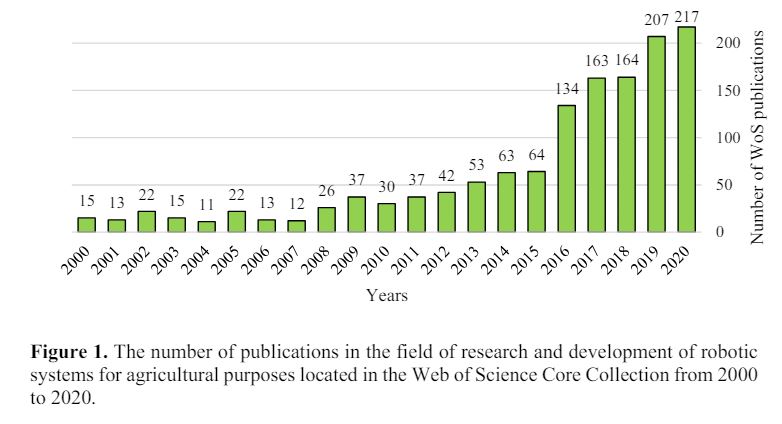 |
Ag Robotics: areas
of interest (nb of publications)
|
|
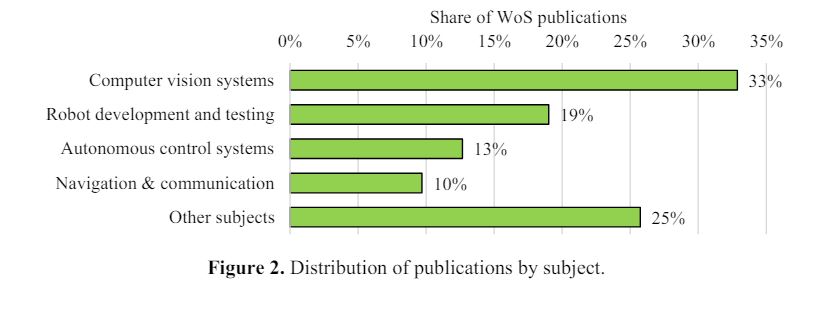 |
Future Farming
> Discover how start-ups revolutionize crop protection, offering greener solutions
For crop growers, it’s accurate to say there hasn’t been too much to be excited about in the area of crop protection products.
> Herbicides: Bayer develops alternative to glyphosate herbicide
Bayer, the chemical conglomerate, has announced its endeavor to develop an alternative to the controversial herbicide glyphosate.
> Irrigation: CropX and WiseConn: digital integration to streamline irrigation management
With the integration of WiseConn's smart irrigation system, dual CropX and WiseConn users will now have access to as-applied data.
> Harvest technology: Fieldwork wins UK government grant for the BerryAI Project
Fieldwork Robotics Ltd. announced that it has been awarded a £600k government grant by the Department for Environment, Food and Rural Affairs and Innovate UK.
> Regenerative: Bayer and Trinity Agtech join forces to drive regenerative practices
Bayer announced a partnership with UK-headquartered company Trinity Agtech.
> Autonomy: Krone and Lemken are focussing on autonomy
The agricultural technology specialists Krone and Lemken are expanding the range of applications for their autonomous process.
> Seeding: The impact and benefits of variable rate seeding
Higher field variability offers higher efficiency and payback of variable rate seeding.
> Seeding: Which machine do you choose for sowing cover crops?
A successful cultivation of cover crops starts with good sowing. Therefore, it is important that the arable farmer prepares a nicely crumbled seedbed.
> Global collaboration: empowering combine harvester operators worldwide
Discover how combine harvester operators worldwide can benefit from combinesettings.com. This pioneering platform connects farmers globally.
> Gene editing: UK Potato Industry: eyes on innovative precision breeding project
A UK-based research team is set to step change the potato supply chain by applying cutting edge precision breeding approaches.
> Market information: Dutch companies and knowledge institutions develop agricultural robots
A consortium of companies and knowledge institutions from the Northern Netherlands, led by research institute TNO, is focusing on the development, delivery, and use of agrobots in agriculture and horticulture.
> Energy: Reducing greenhouse gas emissions from agricultural machinery
The agricultural sector is actively involved in sustainable energy generation, and extensive research is underway to further reduce greenhouse gas emissions.
> Sustainability: Cookie maker Mondolēz focuses on sustainable wheat cultivation
The largest European cookie maker, Mondelēz International, is working on sustainable wheat cultivation as part of a broad program against climate change.
> Biological control: Breakthroughs in biological crop protection: capitalizing on white-hot demand
Innovative startups are revolutionizing crop protection through groundbreaking technologies like RNA interference (RNAi) and systemic metabolites.
> Fertilizers: Precision farming insights – Part 2: Working with Variable Rate Technology
Last spring, I teamed up with a farm near me where they grow vegetables and large crops.
> Drones: Bulgaria adopts legislation to regulate spray-drones in agriculture
Bulgaria has officially adopted the draft law on amendments to the Law on Plant Protection.
> Isobus: New camera control via the ISOBUS system
With its iQblue Weeder software, Lemken has integrated the complete control of a hoeing machine into an ISOBUS system
> Mix of tech and steel at World Ag Expo 2024
The agricultural fair World Ag Expo takes place annually in Tulare, in the U.S. state of California. The interest in autonomous vehicles in California is particularly high.
> Spraying Technolog: John Deere and GUSS Automation unveil electric option and smart apply upgrade
John Deere and GUSS Automation debuted the world's first and only fully electric autonomous herbicide orchard sprayer, Electric GUSS.
> Weed control: Carbon Robotics introduces new product capabilities for LaserWeeder
Carbon Robotics announced the Track LaserWeeder, a new model of its LaserWeeder, and two software enhancements.
> Field robots: Yanmar is stepping up its autonomous offerings
The Yanmar YV01 that was on display and demo at the recent World FIRA in Auzeville-Tolosane near Toulouse, France.
> Pruning robot: Robotic pruner for orchards and vineyards
Startup Robotic Perception is developing a robotic pruning solution for orchards and vineyards to be launched later this year.
> Field robot: Multinationals are discovering French robot event World Fira
The 8th edition of the robotics event World FIRA early February in Toulouse attracted many participants and visitors and had some surprising news in store.
> Regenerative: McCain doubles the scope of its regenerative agriculture program
McCain rewards regenerative agriculture indicators such as resilient soils, crop diversity, reduction of pesticide toxicity, and increasing organic carbon content.
> Analyzing Norwegian DAT’s approach using precision spray technology
Unlike conventional methods, DAT employs a patch spraying system, utilizing advanced precision technology to precisely target clusters of weeds in a very early stage.
> Harvesting robot: Afara robotic cotton picker salvages leftover cotton
The new Afara robotic cotton picker aims to relief human cotton pickers who normally pick the cotton leftovers that self-propelled cotton harvesters leave behind in cotton fields.
> Field robot: New Agile Slopehelper for narrow vineyards
PeK Automotive is launching a new and smaller field robot model dedicated to 5 to 20 hectares vineyards at World FIRA. Their new model is called Agilehelper.
> Indoor farming: Indoor Farming Market anticipated reaching US$ 118.17 billion by 2033
The global Indoor Farming Market stands at a valuation of US$ 40.51 billion in 2023 and is forecasted to expand at a CAGR of 11.3% during the forecast period.
> Field robot: Italian ICARO X4 Robot decides when to combat fungi in vineyards
The ICARO X4 robot from Italian manufacturer Maschio Gaspardo not only navigates autonomously through vineyards but also determines the best time to combat harmful fungi
> Grain control: Scottish Crover robot mixes and checks grain quality in bins
The Crover caught attention for its practical application: monitoring and managing grain quality in grain silos.
> AG robot of the year: Tortuga AgTech wins Ag Robot of the Year 2024 award, Digital Workbench public favourite
The Tortuga AgTech strawberry and table grape harvesting robot is the winner of the Ag Robot of the Year 2024 award.
> Expert opinion: ‘Agricultural machinery breaks records with prices exceeding one million dollars each’
The agricultural sector finds itself grappling with a monumental challenge as prices for farm machinery and tractors soar.
> Nebraska research team developing autonomous planting robot for cover crops
Researchers at the University of Nebraska-Lincoln are developing a commercial robot for autonomously planting cover crops.
> Connect rooms: This is how Connect Room works for Case IH and Steyr
Premium tractor brands Case IH and Steyr utilize Connect Room, enabling dealers to monitor machines remotely and provide online services.
> Weed control: Two British companies have developed a spot sprayer
Two British companies, Techneat Engineering and Tillet en Hague, have developed a spot sprayer for onions, leeks, and carrots.
> Electric tractor: French start-up Seederal builds prototype electric tractor
The French start-up Seederal is in the process of constructing an electric tractor. It is said to be an electric tractor with a power of 160 hp.
> Harvest technology: John Deere introduces new S7 Combines
John Deere has launched its new S7 Combine, a machine designed to deliver increased efficiency with the latest John Deere engines
> Field robots: One year’s experience with Agbot, what’s it been like?
Gerrit Kurstjens invested in Agxeed's Agbot. Now, 10 months after the integration of this new machine, Future Farming went to witness the impact.
> Hydrogen: Egide Vandevelde: ‘New Holland sets hydrogen aside for now’
Small vehicles are becoming electric, while for larger ones, the options are methane or a hybrid solution.
> Autonomous robots: answering three basic questions
Autonomous robots are one of, if not the hottest trends in precision agriculture at this moment.
> Harvest technology: DFKI Robotics Innovation Center working on strawberry harvester Shivaa
The robot SHIVAA is being developed for the fully autonomous harvesting of strawberries grown in open field.
> Herbicides: Bayer develops alternative to glyphosate herbicide
Bayer, the chemical conglomerate, has announced its endeavor to develop an alternative to the controversial herbicide glyphosate.
> Irrigation: CropX and WiseConn: digital integration to streamline irrigation management
With the integration of WiseConn's smart irrigation system, dual CropX and WiseConn users will now have access to as-applied data.
> Market information: Fieldwork wins UK government grant for the BerryAI Project
Fieldwork Robotics Ltd. announced that it has been awarded a £600k government grant by the Department for Environment, Food and Rural Affairs and Innovate UK.
> Regenerative: Bayer and Trinity Agtech join forces to drive regenerative practices
Bayer announced a partnership with UK-headquartered company Trinity Agtech.
> Biolgical protection: Discover how start-ups revolutionize crop protection, offering greener solutions
For crop growers, it’s accurate to say there hasn’t been too much to be excited about in the area of crop protection products.
> Biostimulants: UPM launches new biostimulant product range
UPM Biochemicals has announced the launch of a new range of bio-based plant stimulants, UPM SolargoTM.
> New expert opinion - Every year farmers are asking me for advice on what should be the first step in variable rate technology. Every time my advice goes to Nitrogen fertilizer VRA as one of the most crucial, albeit expensive, tasks for a farmer in the application of nitrogen-based fertilizers.
> Yield gap: ‘Why farmers need to continue increasing their yields’
Over the past 10,000 years, agricultural expansion has transformed vast swathes of wilderness into croplands and pasture.
> Smart farming: New John Deere articulated tractor with advanced smart farming capabilities
The American machinery manufacturer John Deere introduced the largest tractor it has ever built: an 830 hp John Deere articulated tractor.
> Connectivity: CNH supports expanded rural connectivity in Latin America
CNH brings 4G network connectivity and digital services to 500,000 hectares of countryside in the province of Buenos Aires, Argentina.
> Field robots: SIZA Robotics launches autonomous robot for vegetable and beet crops
French company SIZA Robotics has launched its commercial pre-series of an autonomous robot for vegetable and beet crops.
> Spray technol0gy: Two British companies have developed a spot sprayer
Two British companies, Techneat Engineering and Tillet en Hague, have developed a spot sprayer for onions, leeks, and carrots.
> Electric tractors: French start-up Seederal builds prototype electric tractor
The French start-up Seederal is in the process of constructing an electric tractor. It is said to be an electric tractor with a power of 160 hp.
> Repair: How Case IH keeps an eye on your tractor from afar
Premium tractor brands Case IH and Steyr utilize Connect Room, enabling dealers to monitor machines remotely and provide online services.
> Field robots: Nebraska research team developing autonomous planting robot for cover crops
Rearchers at the University of Nebraska-Lincoln are developing a commercial robot for autonomously planting cover crops.
See futurefarming.com
Studi di teste di cavallo, de Stefano Bruzzi (Piacenza, IT, 1835 – 1911)
|
01 - 21/03/2024 |
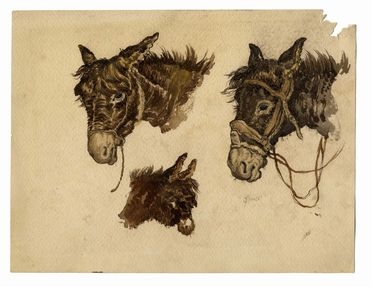 |
La bergère, de Stefano Bruzzi (Piacenza, IT, 1835 – 1911)
|
02 - 21/03/2024 |
.jpg) |
The Signal – Global Ag High Tech Initiative
> Ground Breaking Podcast Episode #3: How Public and Private Sectors
Can Work Together to Reduce the FUD Factor
ICIT's Joyce Hunter discusses how the ag industry can work with government
organizations to ease the process of ag tech adoption.
>TELUS Formally Announces Proagrica Acquisition: Strategic Acquisition
or Act of Desperation?
The acquisition of Proagrica raises doubts about TELUS's prospects in
the ag software market, says one industry insider.
> Integrating Data-Driven Solutions for Fine-Tuned Climate Control
in Indoor Farming
Next-generation technologies can radically transform indoor farms and
greenhouses into prolific food sanctuaries.
> Sustainable Rice Paddies: How Riso Gallo Uses xFarm Technologies
to Digitalize Its Supply Chain
A multi-year project aims to digitalize Riso Gallo’s entire supply chain
participating in the ‘Rice that sustains’ project by 2026.
> Key Takeaway from the World Agri-Tech Innovation Summit: Survival
While the tone of the event remained positive, the prevailing message
underscored the importance of survival for agtech startups.
> Field Data Management Software: 5 Key Takeaways From Stratus Ag Research
Study
Agribusiness analyst Shane Thomas shares insight on the latest research
on the adoption and use of field data management software.
> Field Data Management Software: 5 Key Takeaways From Stratus Ag Research
Study
Agribusiness analyst Shane Thomas shares insight on the latest research
on the adoption and use of field data management software.
> How AWS and Ever.Ag Are Accelerating AI-Enhanced Crop Management
and Sustainability
FieldAlytics will leverage AWS's Generative AI on the SageMaker platform
to offer crop growth modeling and imagery change detection.
> Bayer Pilots Unique Generative AI Tool for Agriculture
The company has been using proprietary agronomic data to train a large
language model (LLM) with years of internal data.
> 5 Ways Drones Are Making AI More Accessible to Farmers
Drone technology makes AI more affordable, easier to manage, and more
accurate, thus giving farmers who use it significant returns.
> Transforming Crop Insurance: Prioritizing Producers and Enhancing
User Experience with Technology
Satellite imagery and remote sensing stand out as one of the most promising
technologies poised to transform crop insurance.
> Latest Farming Technology Trends Available From Bushel 2024 State
of the Farm Report
The report shares perspectives from America’s larger, high-growth, and
next-gen farmers.
> CropX and WiseConn Announce Digital Integration to Streamline Irrigation
Management for Drip Irrigators (CropX Technologies)
> Bayer Crop Science Extends Global Partnership with AgriFutures growAG
for Innovation (Bayer)
> John Deere, Kinze and Ag Leader Form Collaboration Agreement (Deere
& Co.)
> Intelinair
Revolutionizes Crop Intelligence: A Game-Changer in AgTech
Intelinair is reshaping the future of agriculture through its cutting-edge
technology.
> Why the VISION Conference Is So Important to AgGateway
CEO Brent Kemp says its important for them to be involved in conversations
about interoperability and ag tech adoption.
> How AI Is Taking Green-on-Green Spray Technology to New Levels of
Productivity and Sustainability
Learn how advancements in AI computer vision is providing never-before-seen
accuracy.
> Cross-Industry Insights: Why Amazon Web Services Supports the VISION
Conference
Ron Osborne, Global Head of Technology for Agriculture at AWS, shares
why AWS was a proud partner of the recent VISION Conference.
> How Machinery Company Jacto Is Helping to Deliver Connectivity to
Brazilian Farmers
Connectivity is a huge obstacle for Brazilian farms to climb the level
of digital agriculture.
> Infusing Ag Tech Into the Future
Corteva's Brian Lutz discussed the cross-industry synergies that will
shape the future of ag tech at the recent VISION Conference.
> Marketing in Ag Tech: How to Effectively Reach Your Audience
A recent podcast sheds light on the complexities of marketing in the ag
tech sector and offers practical insights for driving adoption.
> Why the VISION Conference Is So Important to AgGateway
CEO Brent Kemp says its important for them to be involved in conversations
about interoperability and ag tech adoption.
> How AI Is Taking Green-on-Green Spray Technology to New Levels of
Productivity and Sustainability
Learn how advancements in AI computer vision is providing never-before-seen
accuracy.
> Cross-Industry Insights: Why Amazon Web Services Supports the VISION
Conference
Ron Osborne, Global Head of Technology for Agriculture at AWS, shares
why AWS was a proud partner of the recent VISION Conference.
> How Machinery Company Jacto Is Helping to Deliver Connectivity to
Brazilian Farmers
Connectivity is a huge obstacle for Brazilian farms to climb the level
of digital agriculture.
> Infusing Ag Tech Into the Future
Corteva's Brian Lutz discussed the cross-industry synergies that will
shape the future of ag tech at the recent VISION Conference.
> Marketing in Ag Tech: How to Effectively Reach Your Audience
A recent podcast sheds light on the complexities of marketing in the ag
tech sector and offers practical insights for driving adoption.
> Corteva Leverages Data and Technology to Help Farmers Produce More
with Less
Embracing the power of data and technology, Corteva is revolutionizing
agriculture.
> Ground Breaking Podcast Episode #2: Untangling On-Farm Data for Clear
Takeaways
Intelinair's Kevin Krieg discusses how farmers are using data and how
the industry can create seamless solutions for farmers through collaboration.
> Smart Farming and the Transition to Regenerative Ag: Why Are EU Farmers
Struggling With Climate Cognitive Dissonance?
While EU farmers understand the biggest risks to their farms, a study
reveals they aren’t using available tools to manage these threats.
> Precision Farming Market: Unveiling the Growth Potential and Revolutionizing
Agriculture
In the dynamic landscape of modern agriculture, the precision farming
market is sowing the seeds of innovation and efficiency.
> Varaha Raises $8.7 Million to Accelerate Agricultural Decarbonization
Varaha emerges as a frontrunner in combating climate change in the developing
world through nature-based carbon credits.
> How Syngenta Is Partnering with CropX to Optimize Irrigation and
Meet Sustainability Goals
After a successful trial, Syngenta is installing the CropX system on additional
irrigated corn production acres.
> Harnessing Ag Tech for Sustainable Ag
A VISION Conference panel explored how cutting-edge agricultural technology
serves as a catalyst for a transformative journey.
See
globalagtechinitiative.com
Mouton de profil, de Stefano Bruzzi (Piacenza, IT, 1835 – 1911)
Robots and happy workers: Productivity surge helps explain US economy’s
surprising resilience, by Paul Wiseman, February 21, 2024
WASHINGTON (AP) — Trying to keep up with customer demand, Batesville Tool
& Die began seeking 70 people to hire last year. It wasn’t easy. Attracting
factory workers to a community of 7,300 in the Indiana countryside was
a tough sell, especially having to compete with big-name manufacturers
nearby like Honda and Cummins Engine.
Job seekers were scarce.
“You could count on one hand how many people in the town were unemployed,”
said Jody Fledderman, the CEO. “It was just crazy.’’
Batesville Tool & Die managed to fill just 40 of its vacancies.
Enter the robots. The company invested in machines that could mimic human
workers and in vision systems, which helped its robots “see” what they
were doing.
The Batesville experience and others like it have been replicated countlessly
across the United States for the past couple of years. Chronic worker
shortages have led many companies to invest in machines to do some of
the work they can’t find people to do. They’ve also been training the
workers they do have to use advanced technology so they can produce more
with less.
The result has been an unexpected productivity boom, which helps explain
a great economic mystery: How has the world’s largest economy managed
to remain so healthy, with brisk growth and low unemployment, despite
brutally high interest rates that are intended to tame inflation but that
typically cause a recession?
To economists, strong productivity growth provides an almost magical elixir.
When companies roll out more efficient machines or technology, their workers
can become more productive: They increase their output per hour. A result
is that companies can often boost their profits and raise their employees’
pay without having to jack up prices. Inflation can remain in check.
.../...
See
apnews.com
Plantix: more than a crop doctor driven by AI
The Plantix app helps farmers to detect pests and diseases on crops within
seconds. It works on Android phones.
See
futurefarming.com
|
Gazette
de vitisphere.com, |
The 2024 list of agrifood corporates making regenerative agriculture commitments, by Jennifer Marston
A non-exhaustive look at agrifood corporates’ goals and ambitions for bringing better farming practices to their supply chains.
The last time we compiled a list of agrifood corporates making regenerative agriculture commitments, it took hours upon hours of reading between corporate jargon lines to understand a handful of companies’ goals.
>>> What a difference a couple years makes.
In 2024, most major food companies have a page on their websites dedicated to regenerative agriculture (sometimes used interchangeably with “sustainable” agriculture); a large portion of these have clear goals with target dates, too.
The following list is a non-exhaustive look at those goals and ambitions, focusing on many of the world’s largest agrifood corporations.
Last time, I mentioned one big challenge is that “regenerative agriculture” still has no set definition. While that still holds true, the bigger observation in 2024 is the number of companies leaning heavily on sustainability jargon to describe goals. With greenwashing pretty rampant nowadays, it will be important to check beneath the PR-friendly language at the actual acres, dates, practices and prescriptions.
As detached observers, we’re not making that judgement call for any of the following companies. Rather, this list is a summary of agrifood corporate involvement in regenerative agriculture. The hope is that it can aid in some small way with tracking progress and holding everyone accountable.
…/…
See agfundernews.com
Sense-prescribe-act: Sentera takes on precision weed management with alternative to See & Spray, By Jennifer Marston, February 15, 2024
As regulatory pressure to reduce herbicide use increases, Sentera adds precision weed management to its tech stack.
.../...
Sense-prescribe-act: Sentera takes on precision weed management with alternative to See & Spray
Weed control has been relatively straightforward for the last couple decades. Seed traits were engineered to tolerate glyphosate herbicide (e.g., Roundup). Farmers planted the seeds, blasted the field with glyphosate, and watched the weeds die and the crops survive.
But while herbicide-resistant weeds have existed since the mid-twentieth century, their numbers have especially proliferated over the last decade. Overuse has reduced chemical solutions’ efficacy at the same time weeds have evolved to tolerate herbicides such as glyphosate. This is happening all over the world.
Enter precision weed management, a catch-all phrase for the various tools and technologies that promise weed control with less reliance on herbicides (or none, in some cases).
Minnesota-based Sentera recently entered this segment with an aerial scouting technology that can detect weeds and generate data about when and where to spray, and with which chemical cocktail. [Disclosure: Sentera is a portfolio company of AgFunder, AFN’s parent company.]
The company started as a platform diagnosing high-resolution imagery, converting it into agronomic data on things like plant nutrition and field health. The idea was, and remains, to assist agronomists in their decision-making processes throughout the season via precision ag tools; its newly launched weed tech is very much along those lines.
.../...
See agfundernews.com
What the Latest US Farm Census Says About the Changing Ag Landscape
See
civileats.com
An Optimist’s Guide to the Planet
An Optimist’s Guide to the Planet captures Nikolaj Coster-Waldau’s
search for people across the globe who are helping drive humanity
toward a brighter, more sustainable future.
See
bloomberg.com
https://www.bloomberg.com/originals/series/an-optimists-guide-to-the-planet
At last! A new, more science-based, outcomes-focused approach to
defining regenerative agriculture, by Dr Julian Little, October 2023,
in Science for Sustainable Agriculture
The recent publication of the SAI Platform’s global framework document
for defining and measuring the outcomes of regenerative agriculture
provides a welcome and much-needed injection of science-based thinking.
In expressing the resource use and environmental impacts of regen
ag farming practices per unit of production, this model provides a
more meaningful and evidence-based approach to measuring farm-level
sustainability than other more subjective models such as the Sustainable
Food Trust’s Global Farm Metric and the Sustainable Markets Initiative,
writes Dr Julian Little.
See
scienceforsustainableagriculture.com
Sustainable agriculture for a better world (SAI: Sustainable Agriculture
Initiative)
Growing a sustainable, healthy and resilient agricultural sector whilst
creating strong and secure supply chains.
See saiplatform.org
Arable land needed to produce a fixed quantity of crops
See
humanprogress.org
Land sparing: One reason food has become cheaper (over the long
run) is improved agricultural productivity
Around the world, farmers, geneticists, and other innovators are steadily
increasing the amount of food they can grow from the same patch of
dirt, lowering costs and pressure on wildlife.
Of course, those improvements mainly occur in places that embrace
agricultural innovation.
https://www.informatique-agricole.org/wp-content/uploads/2024/02/Arable_land_needed_to_produce_a_fixed_quantity_of_food.png
Explore
data, see humanprogress.org
AI analyses bird sounds for Somerset conservation project, by Clara
Bullock & Erin Santillo, BBC News
Conservationists are using artificial intelligence to identify and
monitor bird populations by recording their songs.
See
bbc.com
“Home Alone” Grocery Shopping, but with Time Prices
In the 1990 movie Home Alone, eight-year-old Kevin McCallister buys
a basket of groceries for $19.83.
Those same goods would cost $40.60 in the United States today.
But our wages have grown too: for the time it took to earn the money
to buy one McCallister basket in 1990, an unskilled worker would get
1.337 baskets today.
.../...
See
humanprogress.org
La prima neve, de Stefano Bruzzi (Piacenza, IT, 1835 – 1911)
|
05 - 21/03/2024 |
 |
Midi, heure du déjeuner, de Stefano Bruzzi (Piacenza, IT, 1835
– 1911)
|
06 - 21/03/2024 |
.jpg) |
Deciphering The Diet-Cancer Connection, by Chuck Dinerstein, MD, MBA
— February 13, 2024
The discourse about the link between diet and cancer can often be as convoluted
as a tangled mess of spaghetti. If you were expecting definitive answers
in the realm of nutritional science, the TH Chan School of Public Health
discussion on "Reducing Cancer Risk Through Nutrition" will
disappoint.
See
acsh.org
If Your Child Can’t Eat More Than 340 Medium Apples Per Day, You Can
Skip The Organics
In January, the USDA published its 2024 Pesticide Data Program, covering
the 2022 production period. It illustrates that more than 99 percent of
the 8,512 fruits and vegetables sampled had residues below the established
EPA tolerances. And 27.6 percent had no detectable residue.
See
acsh.org
In the face of extreme weather, scientists look to adapt crops, by
Lourdes Medrano, Undark Magazine, December 18, 2023
Do wild varieties of overlooked grains, fruits, and vegetables hold the
key to developing more resilient agriculture?
See
agdaily.com
Most Popular Social Media 2004/2023
See
statistics
See vidéo
Printemps, de Stefano Bruzzi (Piacenza, IT, 1835 – 1911)
|
07 - 21/03/2024 |
 |
L'abbeverata del gregge nel Rio Restano, de Stefano Bruzzi (Piacenza,
IT, 1835 – 1911)
|
08 - 21/03/2024 |
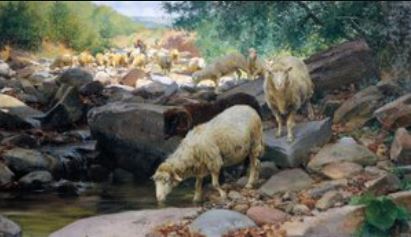 |
Why are some people biased against agriculture? By Michelle Miller,
Farm Babe, January 02, 2024
If you’re a part of agriculture, chances are you’re no stranger to people
saying that this industry (or at least parts of it) are bad. Some people
think that the food system is broken (more on that here) and that agriculture
has a disproportionately negative impact on the environment — there are
so many misconceptions about ag. Some of this is due to a lack of knowledge
about agriculture, while some of this is due to bias against agriculture.
Bias can be a prejudice in favor of or against something. Some bias is
unconscious, meaning that you don’t even realize that you hold stereotypes,
beliefs or subconscious attitudes toward people or something.
So let’s dig into why some people are biased against agriculture.
.../...
Another interesting fact is that Americans believe that less than half
(46 percent) of U.S. farms are family owned — when really 98 percent of
U.S. farms are family owned and operated. This on its own isn’t bias,
but it could absolutely cause people to be biased against larger farms.
.../...
See agdaily.com
Retour à la maison, de Stefano Bruzzi (Piacenza, IT, 1835 – 1911)
|
09 - 21/03/2024 |
 |
La prima neve, de Stefano Bruzzi (Piacenza, IT, 1835 – 1911)
|
10 - 21/03/2024 |
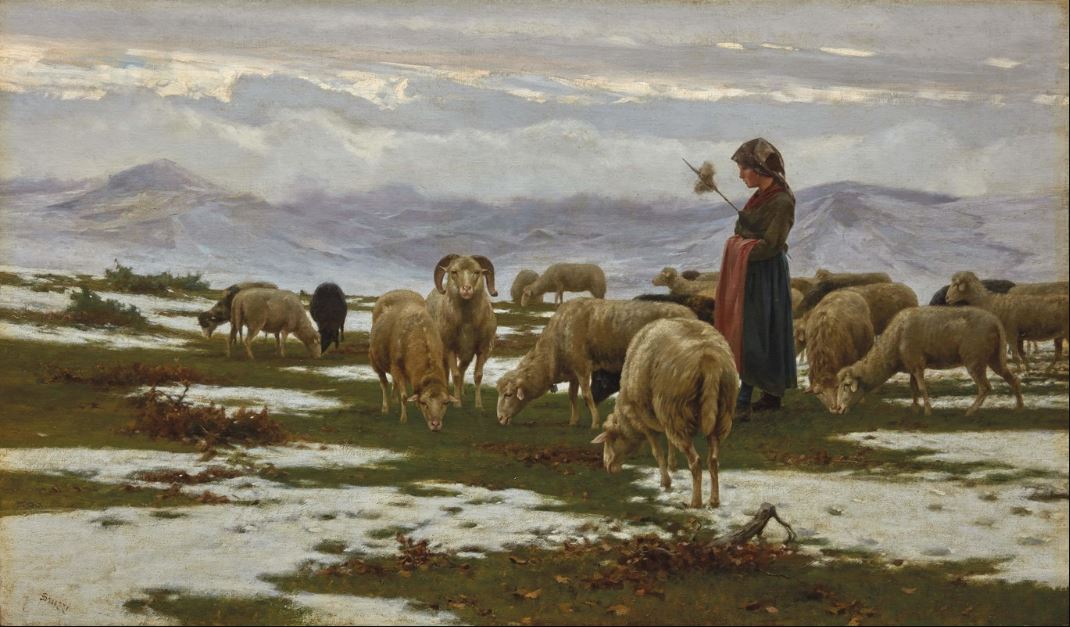 |
Responsible plant nutrition: A new paradigm to support food system
transformation, by Achim Dobermann and all. (International Fertilizer
Association (IFA), Paris, France)
See
sciencedirect.com
View
PowerPoint presentation
Bayer wins latest trial in Pennsylvania Roundup weedkiller suit, by
AGDAILY Reporters, March 06, 2024
Bayer Ag secured a legal victory in Philadelphia on Tuesday regarding
its Roundup weedkiller, while plaintiffs in California withdrew another
case.
Facing numerous lawsuits alleging Roundup caused cancer, Bayer maintains
the product’s safety despite these claims. Recent legal wins in Arkansas
and Delaware add to the company’s success in trials, with Bayer prevailing
in three consecutive cases and 13 out of the last 19 trials.
The win in Philadelphia marks a significant milestone for Bayer, particularly
following recent rulings on admissible evidence in Roundup litigation.
The company also announced a successful trial outcome in Pennsylvania,
where a retired postal service worker claimed Roundup caused his non-Hodgkin’s
lymphoma.
Meanwhile, according to Reuters, a California farmer and his wife voluntarily
dropped their lawsuit alleging Roundup caused cancer, further bolstering
Bayer’s position. Despite ongoing litigation, Bayer remains steadfast
in defending the safety of Roundup and its products.
“We continue to stand behind the safety of Roundup and will confidently
defend the safety of our products and our good faith actions in any future
litigation,” Bayer said in a statement.
…/…
See agdaily.com
|
Gazette
de vitisphere.com, |
How genetically modified pigs could end the shortage of organs for transplants, by Rob Stein, February 29, 2024
…/..
To get FDA approval to start a formal study in humans on the organ waiting list, Revivicor is first studying the pig organs in baboons and in the bodies of people who have been declared brain-dead.
Revivicor has so far sponsored eight such "decedent" procedures, involving hearts and kidneys, at NYU Langone Health in New York and the University of Alabama at Birmingham. More tests are planned as more body donors are found.
A liver procedure using a cloned, modified eGenesis animal was recently announced at the University of Pennsylvania in Philadelphia. Livers could be used as temporary bridges to transplantation with a human organ, researchers say.
In addition, surgeons at the University of Maryland in Baltimore implanted gene-edited pig hearts into two men who had run out of other options. Those volunteers survived only a few weeks. But Ayares says the men provided invaluable information about using organs from genetically modified cloned pigs in people. For example, researchers found evidence of a pig virus in one of the heart recipients, prompting Revivicor to add additional testing to ensure the animals are free from that risk.
"We're trying to solve the organ shortage crisis," Ayares says. "These people are heroes."
See npr.org/
Embrace new technologies to accelerate progress towards SDGs, UN Sec-Gen urges G-77 nations, by Richard Wetaya, February 3, 2024
At the recently concluded third South Summit (G-77 + China) in the Ugandan capital of Kampala, UN Secretary-General Antonio Guterres urged nations to harness new technologies to accelerate progress towards achieving the Sustainable Development Goals.
Halfway through the 2030 deadline for realizing the goals, several G-77+China Bloc countries — which helped shape the UN open working report on sustainable development and proposed concrete SDGs ahead of the 2012 UN Conference on Sustainable Development in Rio de Janeiro, Brazil — remain behind schedule.
Guterres said he had proposed an SDG Stimulus of 500 billion dollars a year in affordable, long-term finance for sustainable development and climate action in developing countries and added that initiatives like the Global Digital Compact, which he proposed in his Common Agenda, could accelerate progress towards the SDGs for nations in the Bloc.
“The Global Digital Compact initiative aims to ensure that no one is left behind in a new technological era,” Guterres said during the Summit, whose theme was Leaving No One Behind.
.../...
See allianceforscience.org
| |
More than 90% of new cars sold in Norway are electric. And it all started with some pop stars driving around in a jerry-built Fiat Panda, by Sam Wollaston, 12 Mar 2024 15.41 CET
I’m kneeling on the snow outside the king’s house, impersonating a 1980s heart-throb, with a man named Harald and an electric car. It’s a situation that probably needs some explanation.
Harald isn’t the king, although the king of Norway is also called Harald; we just happen to be outside the monarch’s residence, a handsome red manor. I’m in Stavanger to find out how, in a world where transport contributes about 20% of CO2 emissions, Norway came to lead the world in electric car take-up. In 2023, 82.4% of private vehicles sold in the country were electric. In January, the figure was 92.1%. The goal is to hit 100% by next year.
Meanwhile, in the UK, a ban on new petrol and diesel cars was recently pushed back from 2030 to 2035. Just 14.7% of new cars registered in January were electric. The situation in the EU is even worse: 10.9% of cars sold there in January were electric.
…/…
 |
Scientists engineer plant microbiome for the first time to protect crops against disease
Scientists have engineered the microbiome of plants for the first time, boosting the prevalence of ‘good’ bacteria that protect the plant from disease.
See southampton.ac.uk
Which Countries Have the Largest Forests?
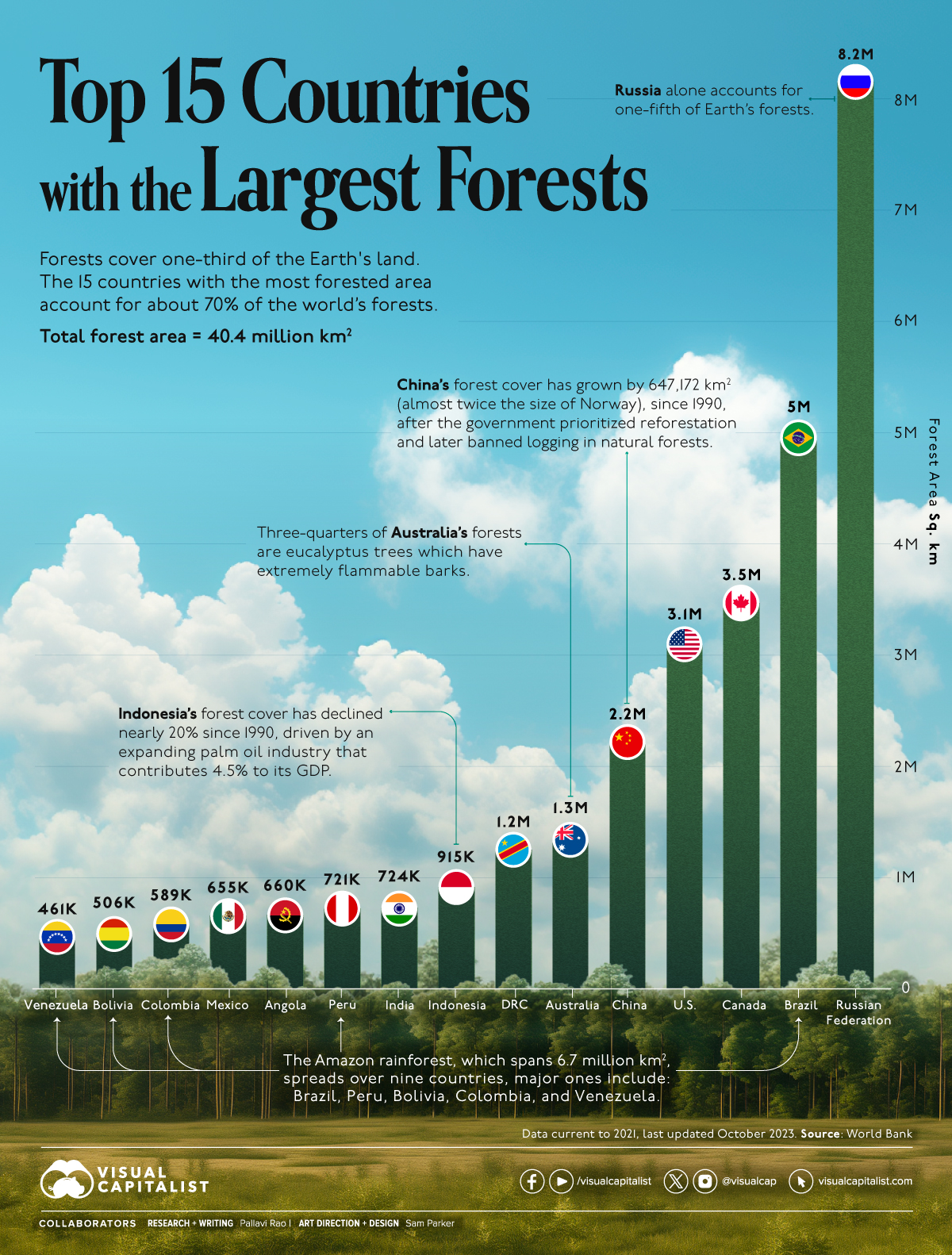 |
Mapping the World’s Forests: How Green is Our Globe? By Adam Symington, January 20, 2023
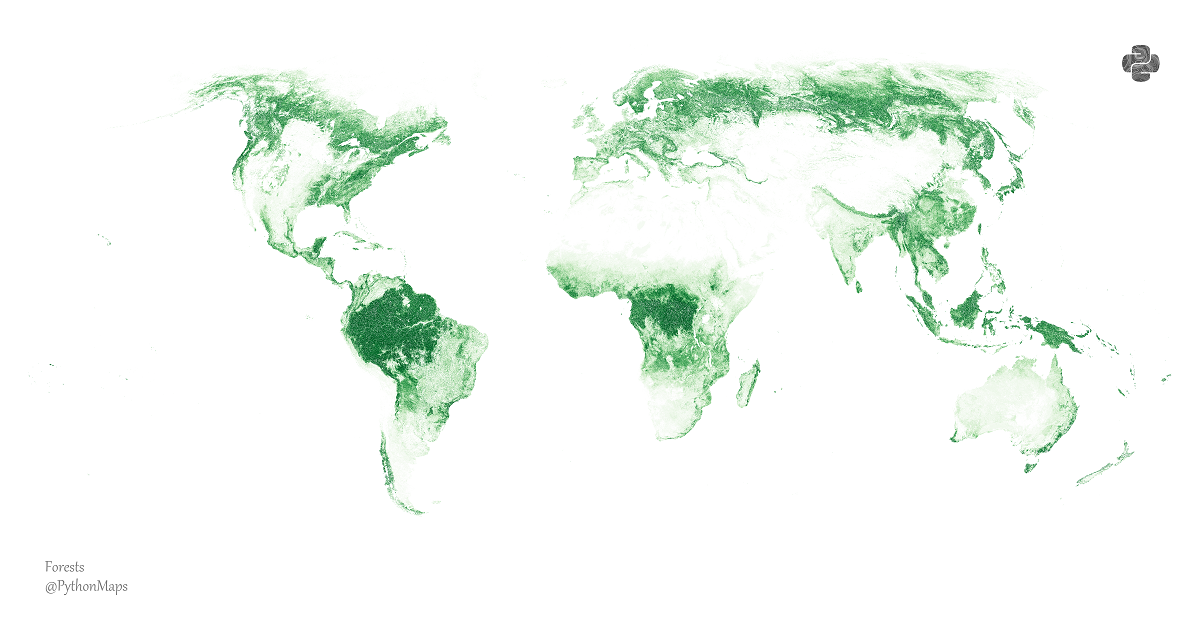 |
The Decarbonization Channel provides a data-driven look at all things decarbonization with a focus on the U.S. energy sector.
See visualcapitalist.com
Scientists just set a nuclear fusion record in a step toward unleashing the limitless, clean energy source, by Angela Dewan, CNN, February 8, 2024
.../...
Nuclear fusion is the same process that powers the sun and other stars, and is widely seen as the holy grail of clean energy. Experts have worked for decades to master the highly complex process on Earth, and if they do, fusion could generate enormous amounts of energy with tiny inputs of fuel and emit zero planet-warming carbon in the process.
The scientists fed the tokamak deuterium and tritium, which are hydrogen variants that future commercial fusion plants are most likely to use.
To generate fusion energy, the team raised temperatures in the machine to 150 million degrees Celsius — around 10 times hotter than the core of the sun. That extreme heat forces the deuterium and tritium to fuse together and form helium, a process that in turn releases enormous amounts of heat.
The tokamak is lined with strong magnets that hold the plasma in. The heat is then harnessed and used to produce electricity.
.../...
See cnn.com
How AI Is Helping Us Learn About Birds
Machine learning is powering new insights into how birds migrate—and forecasts about where they’ll go next, by Malena Carollo, February 3, 2024
.../...
The information that the humans produce, whatever it is, you know, whether you’re an expert, or whether you are a novice, can be really essential as like kernels of what these machine learning models operate on.
See themarkup.org
| |
Weather forecasts have become a lot more accurate
Weather forecasting has come a long way. The chart above shows the
difference between global forecasts and the actual weather outcome
3, 5, 7, and 10 days in advance. The biggest improvements we’ve seen
are for longer timeframes. By the early 2000s, 5-day forecasts were
“highly accurate” and 7-day forecasts are reaching that threshold
today.
Unfortunately, this quality of information isn’t available to everyone.
There are big differences in accuracy across the world, with a large
gap between rich and poor. This is a problem. 60% of workers in low-income
countries are employed in agriculture, arguably the most weather-dependent
sector.
Accurate weather forecasting is crucial in protecting lives and livelihoods,
especially in a world where weather is likely to get more extreme.
 |
Women have made major advances in politics — but the world is still
far from equal
At the beginning of the 20th century, there were no women in national
parliaments around the world.
This changed in 1907 when women first entered Norway’s legislature.
After very limited progress for the next four decades, women made
it into many more parliaments in the second half of the 20th century
— and in 2008, Rwanda had the first women-majority parliament.
The world has come a long way towards political equality. But as our
new article on gender equality shows, women remain underrepresented,
especially in the highest offices.
 |
Improving agricultural productivity is crucial to ending global
hunger and protecting the world’s wildlife
Land use for agriculture has been the main driver of the destruction
of the world's biodiversity for a very long time. But at the same
time, as we protect the world’s environment, we also have to find
ways to produce the food needed to end hunger and malnutrition.
The chart above shows that, after centuries of stagnation, humanity
has recently achieved a large increase in land productivity. Land
use per person has declined by more than half. At the same time, food
supply per person increased in every region of the world.
However, the fact that land use per capita has declined does not mean
the problem is solved. While agricultural land use has been strongly
reduced in some regions, it is increasing in others. If we want to
see the planet’s wildlife thrive, we must reduce our land use further.
 |
Who Americans spend their time with changes a lot across a lifetime
For this biweekly update, we’re resurfacing one of our most popular
charts. It shows who the average American spends their time with across
the different chapters of their life.
When young, Americans spend much of their time with friends and family.
But in their 20s, this starts to drop off quickly, and is replaced
with partners and children.
Across the next three decades, Americans spend much of their time
with partners, children, and, unsurprisingly, coworkers. This time
spent with colleagues begins to drop off around 60 years old — which
makes sense since many people in the US enter retirement around this
age.
The chart also shows that older people spend more time alone. But
as our article on time use around the world shows, solitude and loneliness
are not one and the same.
 |
What share of new cars are electric?
Tracking global data on electric vehicles… Explore data on electric
car sales and stocks worldwide.
See ourworldindata.org
The global fight against polio — how far have we come?
A generation ago, poliomyelitis paralyzed hundreds of thousands of
children every year. Many countries have now eliminated the disease,
and our generation has the chance to eradicate it entirely.
A hospital room in the US with patients in iron lungs in 1952
 |
|
|
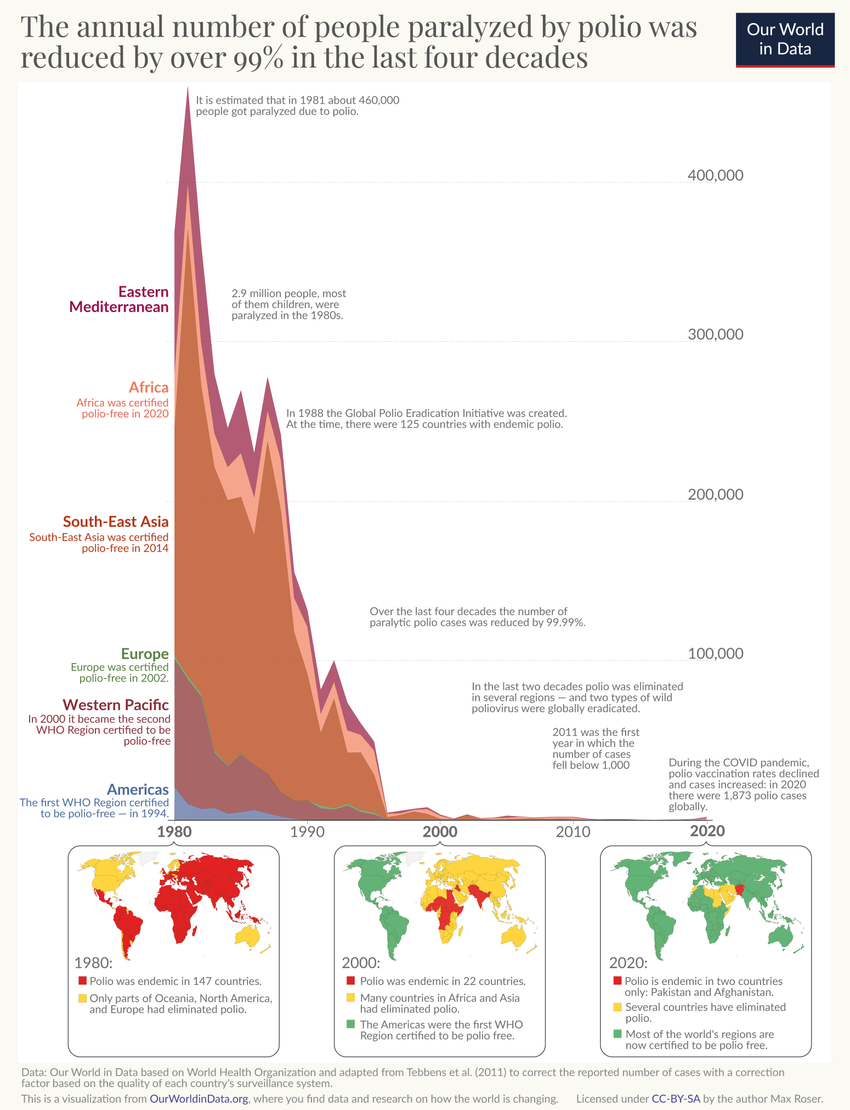 |
“Bad” joke (See Reader Digest)
|
21/03/2024 |
 |
“I Wish You Bad Luck”, read Supreme Court Justice John Roberts' Unconventional
Speech to His Son's Graduating (very American speech... and nice – GW)
On July 3rd 2017, Supreme Court Chief Justice John Roberts delivered the
commencement address at his son’s ninth-grade graduation last month, bestowing
advice that ran counter to many typical commencement speeches.
Extract: “Now the commencement speakers will typically also wish you good
luck and extend good wishes to you. I will not do that, and I’ll tell
you why.
From time to time in the years to come, I hope you will be treated unfairly,
so that you will come to know the value of justice.
I hope that you will suffer betrayal because that will teach you the importance
of loyalty.
Sorry to say, but I hope you will be lonely from time to time so that
you don’t take friends for granted.
I wish you bad luck, again, from time to time, so that you will be conscious
of the role of chance in life and understand that your success is not
completely deserved and that the failure of others is not completely deserved
either.
And when you lose, as you will from time to time, I hope every now and
then, your opponent will gloat over your failure. It is a way for you
to understand the importance of sportsmanship.
I hope you’ll be ignored, so you know the importance of listening to others,
and I hope you will have just enough pain to learn compassion.
Whether I wish these things or not, they’re going to happen. And whether
you benefit from them or not will depend upon your ability to see the
message in your misfortunes.”
Read Roberts’ full remarks below :
Thank you very much.
Rain, somebody said, is like confetti from heaven. So even the heavens
are celebrating this morning, joining the rest of us at this wonderful
commencement ceremony. Before we go any further, graduates, you have an
important task to perform because behind you are your parents and guardians.
Two or three or four years ago, they drove into Cardigan, dropped you
off, helped you get settled and then turned around and drove back out
the gates. It was an extraordinary sacrifice for them. They drove down
the trail of tears back to an emptier and lonelier house. They did that
because the decision about your education, they knew, was about you. It
was not about them. That sacrifice and others they made have brought you
to this point. But this morning is not just about you. It is also about
them, so I hope you will stand up and turn around and give them a great
round of applause. Please.
Now when somebody asks me how the remarks at Cardigan went, I will be
able to say they were interrupted by applause. Congratulations, class
of 2017. You’ve reached an important milestone. An important stage of
your life is behind you. I’m sorry to be the one to tell you it is the
easiest stage of your life, but it is in the books. While you’ve been
at Cardigan, you have all been a part of an important international community
as well. And I think that needs to be particularly recognized.
Now around the country today at colleges, high schools, middle schools,
commencement speakers are standing before impatient graduates. And they
are almost always saying the same things. They will say that today is
a commencement exercise. ‘It is a beginning, not an end. You should look
forward.’ And I think that is true enough, however, I think if you’re
going to look forward to figure out where you’re going, it’s good to know
where you’ve been and to look back as well. And I think if you look back
to your first afternoon here at Cardigan, perhaps you will recall that
you were lonely. Perhaps you will recall that you were a little scared,
a little anxious. And now look at you. You are surrounded by friends that
you call brothers, and you are confident in facing the next step in your
education.
It is worth trying to think why that is so. And when you do, I think you
may appreciate that it was because of the support of your classmates in
the classroom, on the athletic field and in the dorms. And as far as the
confidence goes, I think you will appreciate that it is not because you
succeeded at everything you did, but because with the help of your friends,
you were not afraid to fail. And if you did fail, you got up and tried
again. And if you failed again, you got up and tried again. And if you
failed again, it might be time to think about doing something else. But
it was not just success, but not being afraid to fail that brought you
to this point.
Now the commencement speakers will typically also wish you good luck and
extend good wishes to you. I will not do that, and I’ll tell you why.
From time to time in the years to come, I hope you will be treated unfairly,
so that you will come to know the value of justice. I hope that you will
suffer betrayal because that will teach you the importance of loyalty.
Sorry to say, but I hope you will be lonely from time to time so that
you don’t take friends for granted. I wish you bad luck, again, from time
to time so that you will be conscious of the role of chance in life and
understand that your success is not completely deserved and that the failure
of others is not completely deserved either. And when you lose, as you
will from time to time, I hope every now and then, your opponent will
gloat over your failure. It is a way for you to understand the importance
of sportsmanship. I hope you’ll be ignored so you know the importance
of listening to others, and I hope you will have just enough pain to learn
compassion. Whether I wish these things or not, they’re going to happen.
And whether you benefit from them or not will depend upon your ability
to see the message in your misfortunes.
Now commencement speakers are also expected to give some advice. They
give grand advice, and they give some useful tips. The most common grand
advice they give is for you to be yourself. It is an odd piece of advice
to give people dressed identically, but you should — you should be yourself.
But you should understand what that means. Unless you are perfect, it
does not mean don’t make any changes. In a certain sense, you should not
be yourself. You should try to become something better. People say ‘be
yourself’ because they want you to resist the impulse to conform to what
others want you to be. But you can’t be yourself if you don’t learn who
are, and you can’t learn who you are unless you think about it.
The Greek philosopher Socrates said, ‘The unexamined life is not worth
living.’ And while ‘just do it’ might be a good motto for some things,
it’s not a good motto when it’s trying to figure out how to live your
life that is before you. And one important clue to living a good life
is to not to try to live the good life. The best way to lose the values
that are central to who you are is frankly not to think about them at
all.
So that’s the deep advice. Now some tips as you get ready to go to your
new school. Other the last couple of years, I have gotten to know many
of you young men pretty well, and I know you are good guys. But you are
also privileged young men. And if you weren’t privileged when you came
here, you are privileged now because you have been here. My advice is:
Don’t act like it.
When you get to your new school, walk up and introduce yourself to the
person who is raking the leaves, shoveling the snow or emptying the trash.
Learn their name and call them by their name during your time at the school.
Another piece of advice: When you pass by people you don’t recognize on
the walks, smile, look them in the eye and say hello. The worst thing
that will happen is that you will become known as the young man who smiles
and says hello, and that is not a bad thing to start with.
You’ve been at a school with just boys. Most of you will be going to a
school with girls. I have no advice for you.
The last bit of advice I’ll give you is very simple, but I think it could
make a big difference in your life. Once a week, you should write a note
to someone. Not an email. A note on a piece of paper. It will take you
exactly 10 minutes. Talk to an adult, let them tell you what a stamp is.
You can put the stamp on the envelope. Again, 10 minutes, once a week.
I will help you, right now. I will dictate to you the first note you should
write. It will say, ‘Dear [fill in the name of a teacher at Cardigan Mountain
School].’ Say: ‘I have started at this new school. We are reading [blank]
in English. Football or soccer practice is hard, but I’m enjoying it.
Thank you for teaching me.’ Put it in an envelope, put a stamp on it and
send it. It will mean a great deal to people who — for reasons most of
us cannot contemplate — have dedicated themselves to teaching middle school
boys. As I said, that will take you exactly 10 minutes a week. By the
end of the school year, you will have sent notes to 40 people. Forty people
will feel a little more special because you did, and they will think you
are very special because of what you did. No one else is going to carry
that dividend during your time at school.
Enough advice. I would like to end by reading some important lyrics. I
cited the Greek philosopher Socrates earlier. These lyrics are from the
great American philosopher, Bob Dylan. They’re almost 50 years old. He
wrote them for his son, Jesse, who he was missing while he was on tour.
It lists the hopes that a parent might have for a son and for a daughter.
They’re also good goals for a son and a daughter. The wishes are beautiful,
they’re timeless. They’re universal. They’re good and true, except for
one: It is the wish that gives the song its title and its refrain. That
wish is a parent’s lament. It’s not a good wish. So these are the lyrics
from Forever Young by Bob Dylan:
May God bless you and keep you always
May your wishes all come true
May you always do for others
And let others do for you
May you build a ladder to the stars
And climb on every rung
And may you stay forever young
May you grow up to be righteous
May you grow up to be true
May you always know the truth
And see the lights surrounding you
May you always be courageous
Stand upright and be strong
And may you stay forever young
May your hands always be busy
May your feet always be swift
May you have a strong foundation
When the winds of changes shift
May your heart always be joyful
May your song always be sung
And may you stay forever young
Thank you.
See
time.com
Mortalité des enfants en bas âge / Mortality rate of young children
|
01 - 21/03/2024 |
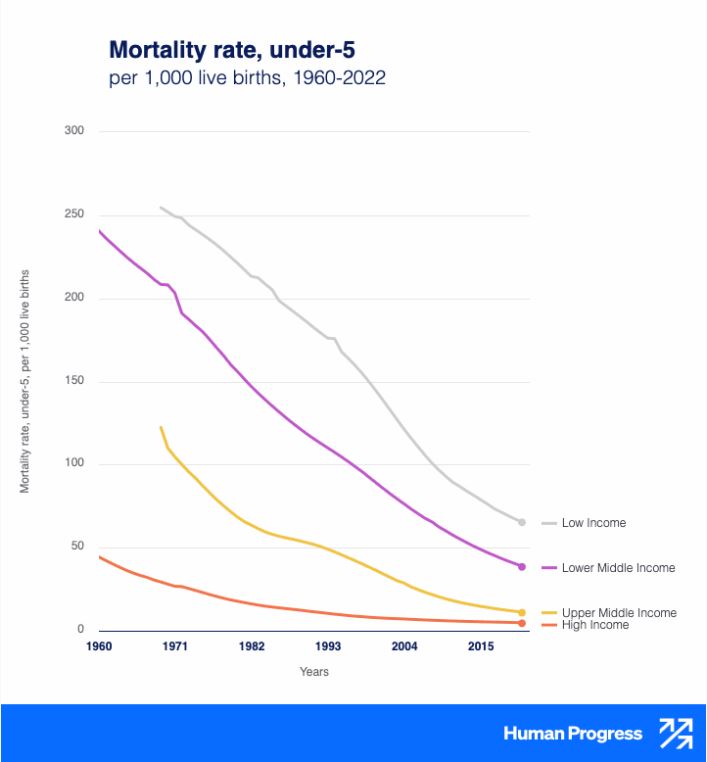 |
Mortalité due à la malaria/ Malaria deaths per 100000 people
|
02
- 21/03/2024
|
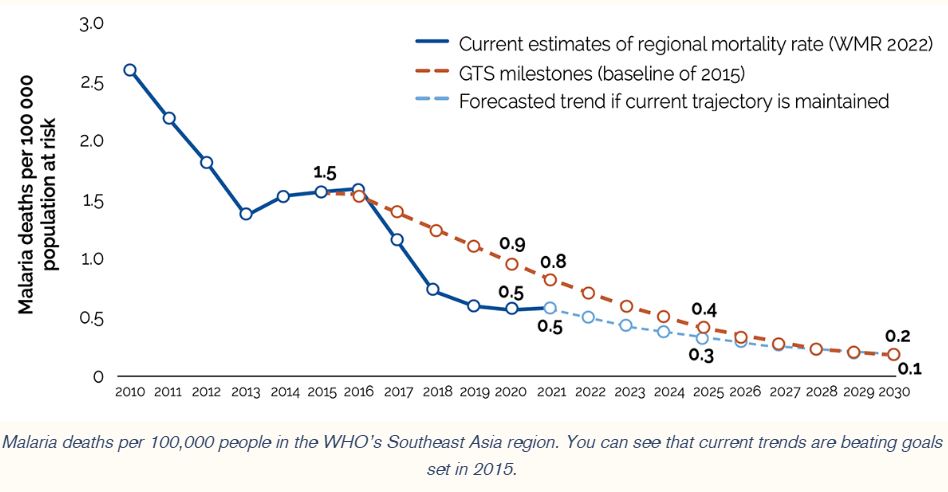 |
Baisse de la mortalité des femmes à la naissance dans le SE asiatique
/ Reudction of maternal mortality in the SE Asia region
|
03
- 21/03/2024
|
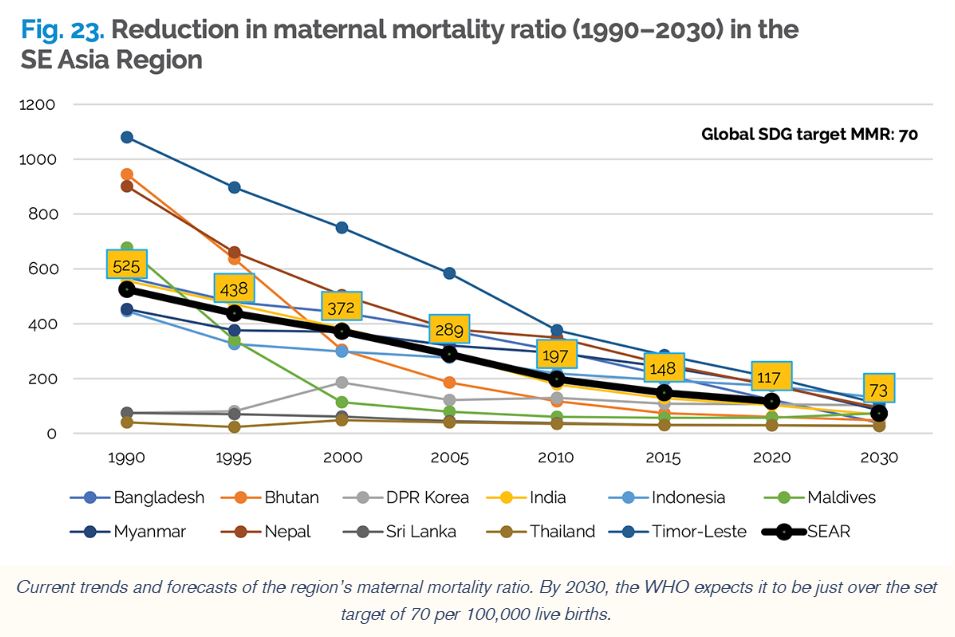 |
Diminution de la mortalité due au SIDA dans le SE asiatique / Reduction
in AIDS-related deaths in the SE Asia Region
|
04
- 21/03/2024
|
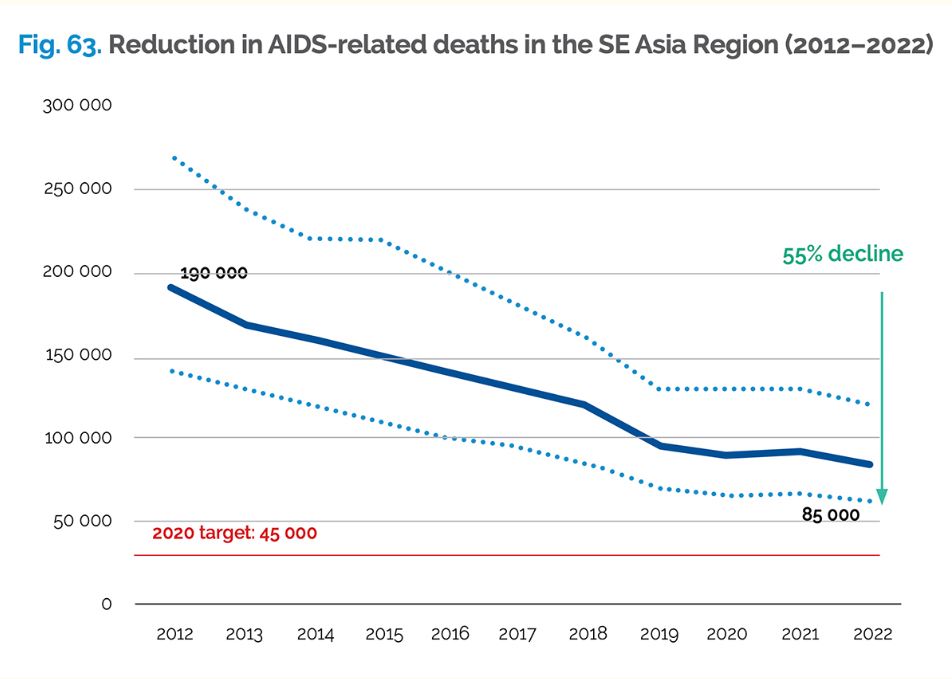 |
Fortune des familles américaines / US Family Net Worth
|
05
- 21/03/2024
|
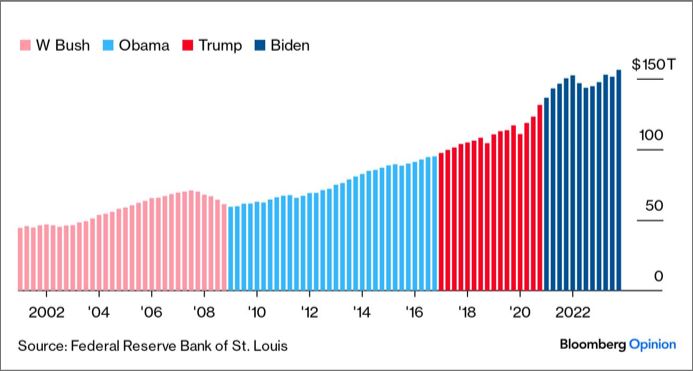 |
Déclin de la natalité partout dans le monde / A global baby bust
|
06
- 21/03/2024
|
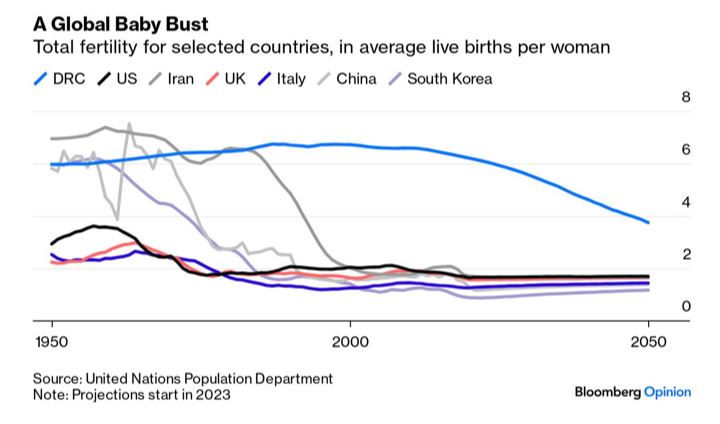 |
Ventes de voitures électriques / New EV sales
|
07
- 21/03/2024
|
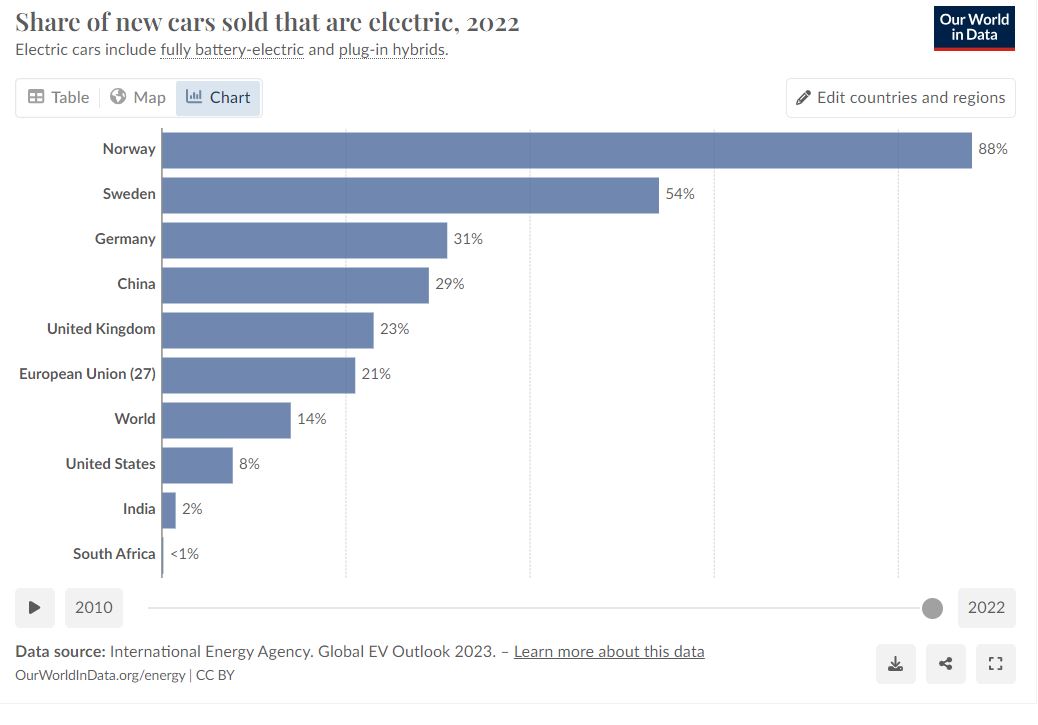 |
Economy basics (1)
|
08
- 21/03/2024
|
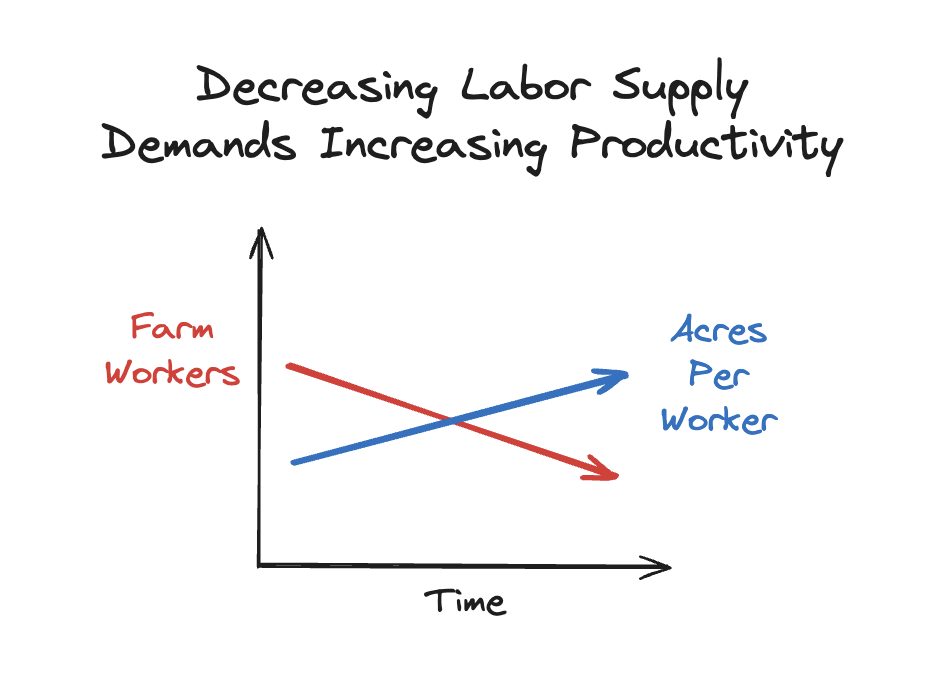 |
Economy basics (2)
|
09
- 21/03/2024
|
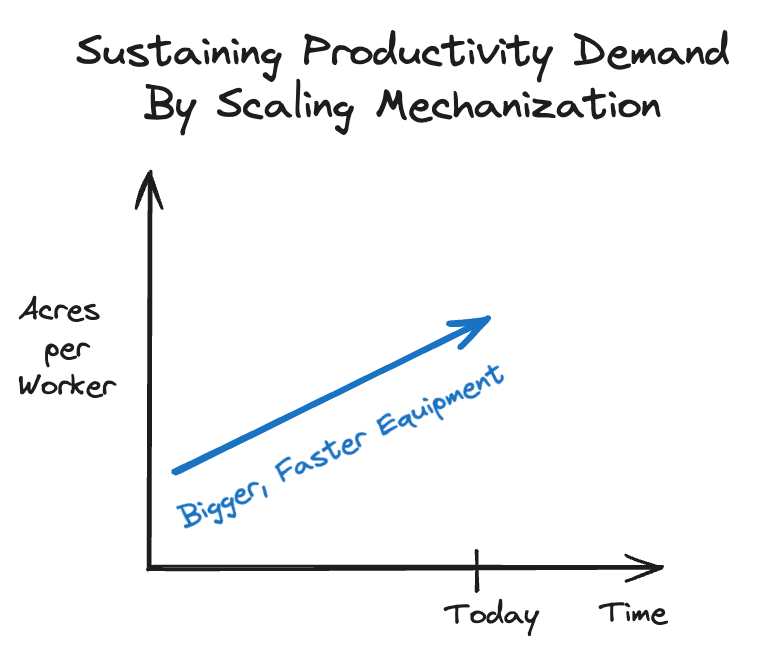 |
Economy basics (3)
|
10
- 21/03/2024
|
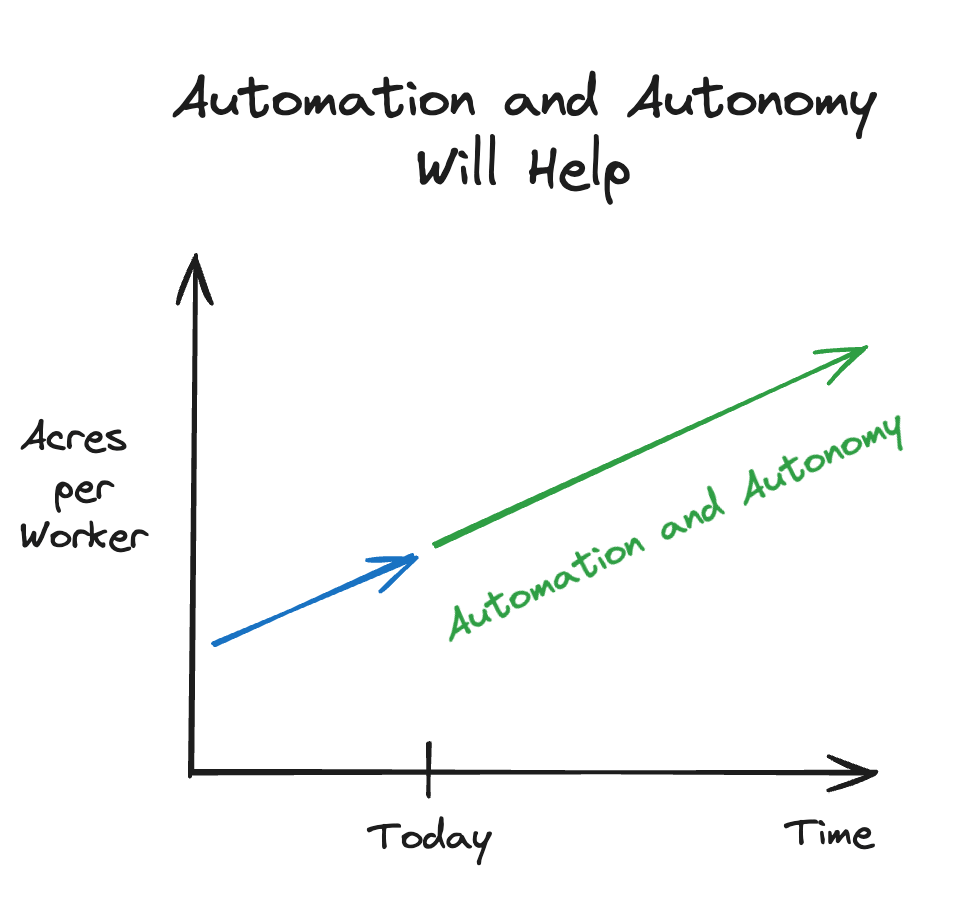 |
La fin du boom de la construction en Chine / End of the Chinese Constructions
boom
|
11
- 21/03/2024
|
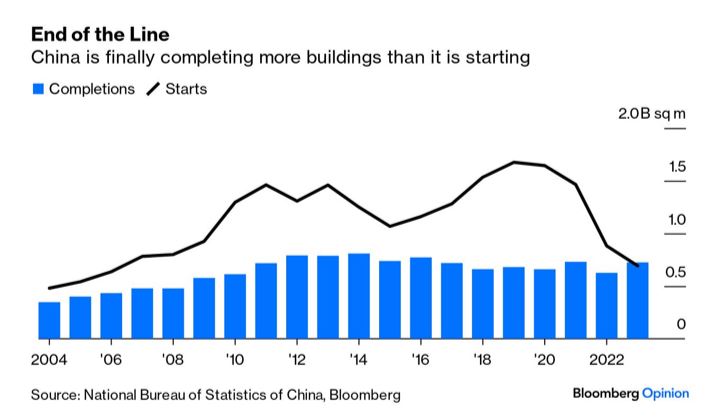 |
Fuir Cuba / Leaving Cuba
|
12-
21/03/2024
|
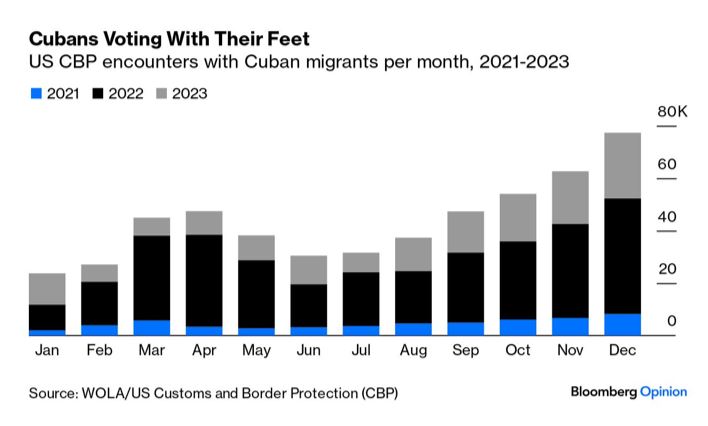 |
Nombre pas exceptionnel de traversées de la frontière SW des USA /
Number of Mexican Border Crossings Not That Big
|
13
- 21/03/2024
|
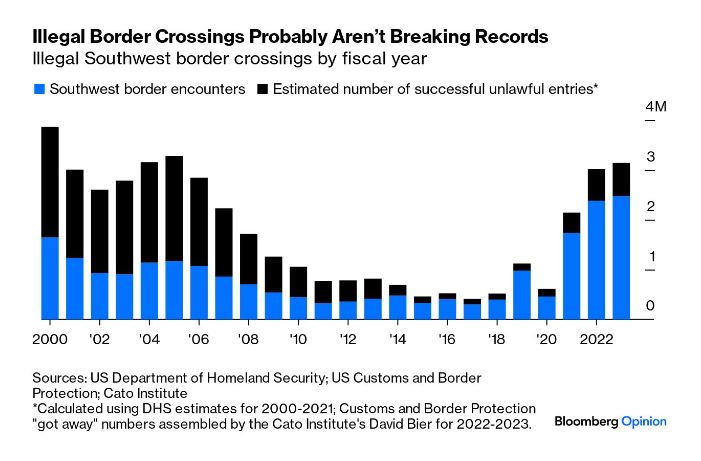 |
Première Ligue, la Reine / English Premier League Domination
|
14
- 21/03/2024
|
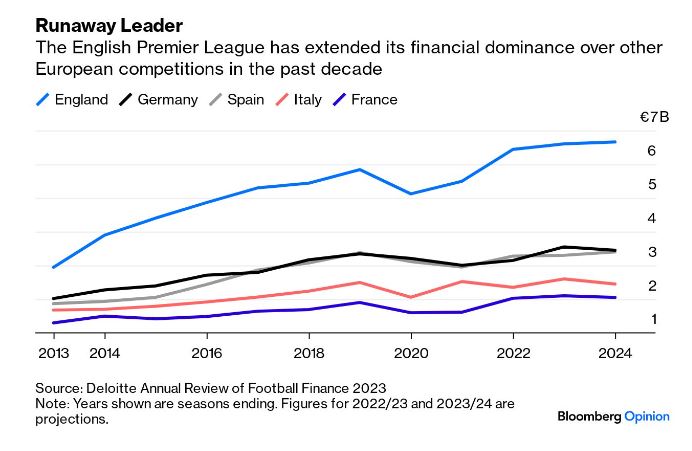 |
Coexistence de véhicules électriques et hybrides / A room for hybrid
cars
|
15
- 21/03/2024
|
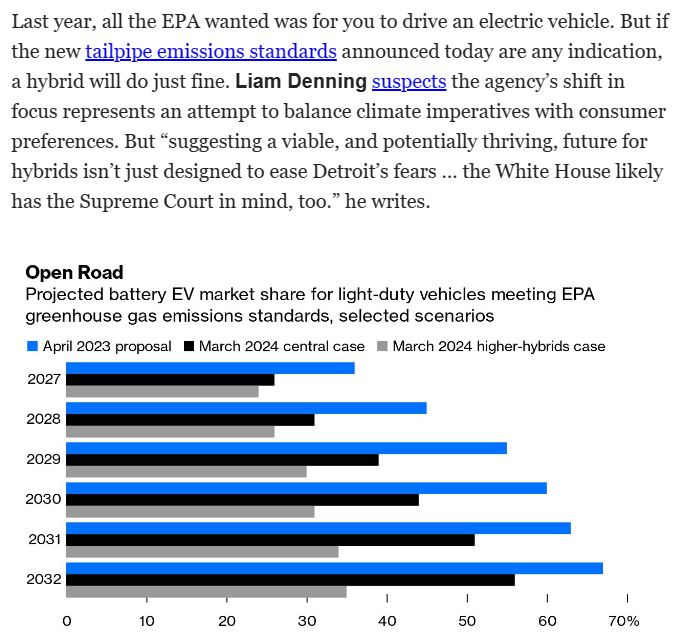 |
Concentration dans l'Ouest des élevages / Concentration of livestock
breeding in the West of France
|
16
- 21/03/2024
|
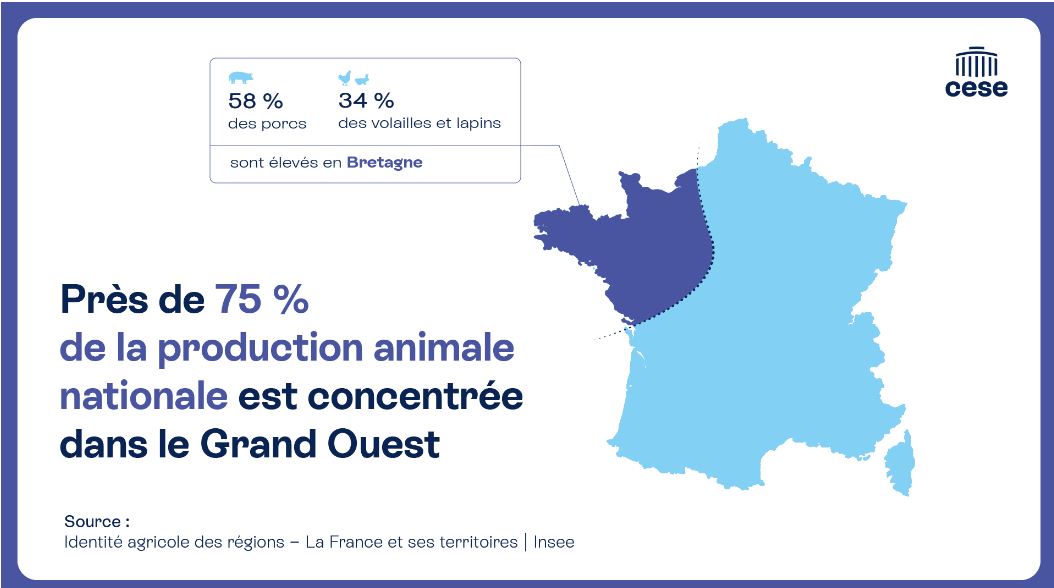 |
Baisse du nombre d'élevages / Decline in the number of farms
|
17
- 21/03/2024
|
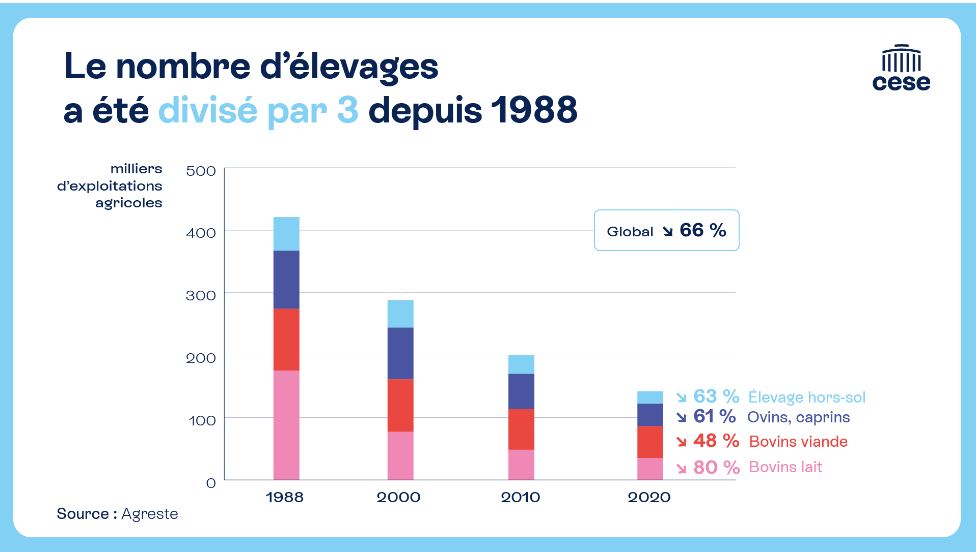 |
Taille des élevages en augmentation / Increasing size of farms
|
18
- 21/03/2024
|
 |
Main d'œuvre dans les exploitations agricoles françaises / Labor on
French farms
|
19-
21/03/2024
|
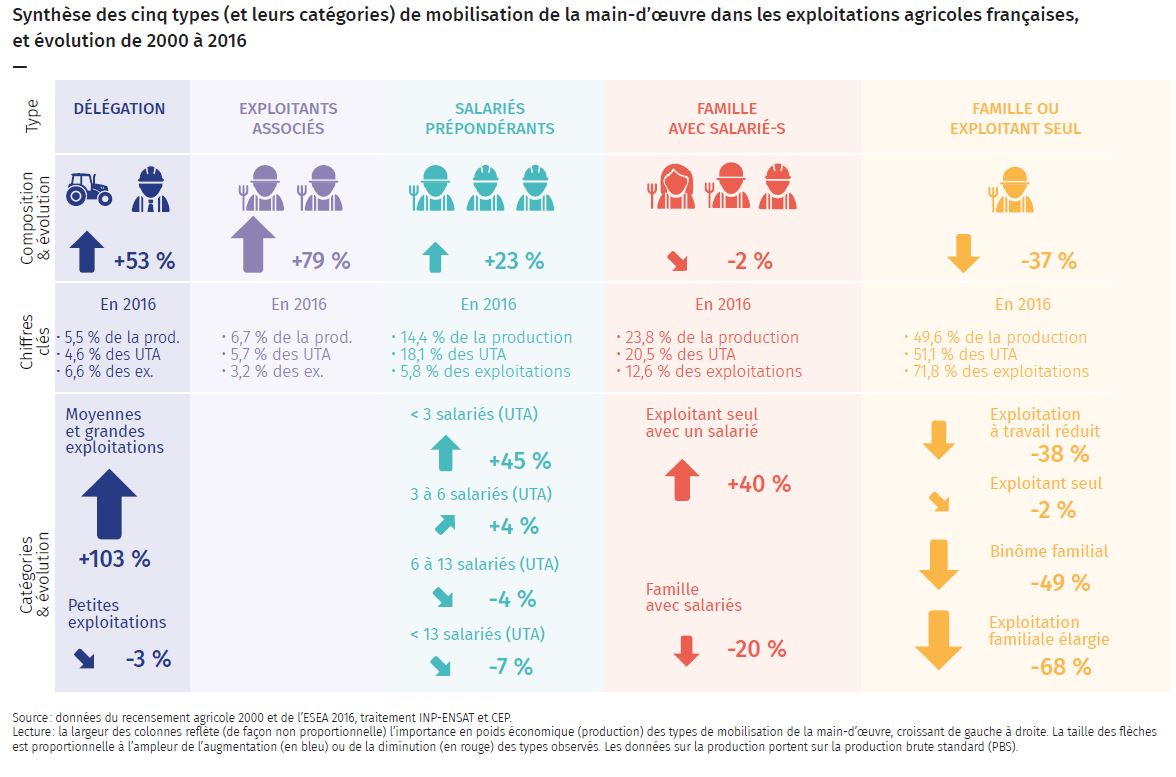 |
KGBurn
The regional KGB headquarters in Arkhangelsk suffered a major
fire and was almost completely destroyed. Shortly after, a man called
looking for help.
“I’m sorry, we can’t do anything,” said the receptionist. “The KGB
has burnt down.”
Five minutes later, the receptionist received another call. “I’m sorry,
we can’t help. The KGB has burnt down.”
Another five minutes passed, and the phone rang again. The receptionist
recognised the voice as the man who’d twice called previously.
“Why do you keep calling? I told you that the KGB has burnt down.”
“I know. I just like hearing it.”
| |
The edition of this efita newsletter is sponsored by Acta Digital Services and its distribution by vitisphere.com
Please, contribute to the content of your efita newsletter, and advertise your events, new publications, new products and new project in this newsletter. Without your support, it will not survive!
Contact: Guy WAKSMAN
E-mail: guy.waksman(a)laposte.net
To read this newsletter on our web site
See Efita
The archives of this newsletter
See Efita
About the EFITA mailing list
You can use the efita moderated list (> 15000 subscribers) to announce any event / product / web site / joke (!) related to IT in agriculture, environment, food industry and rural areas.
If you want to subscribe a friend, please fill in his form.
If you do not wish to receive our messages, please fill in the following form...
_oil_on_cardboard_-_(MeisterDrucke-1091072).jpg)
_-_(MeisterDrucke-1407000).jpg)
